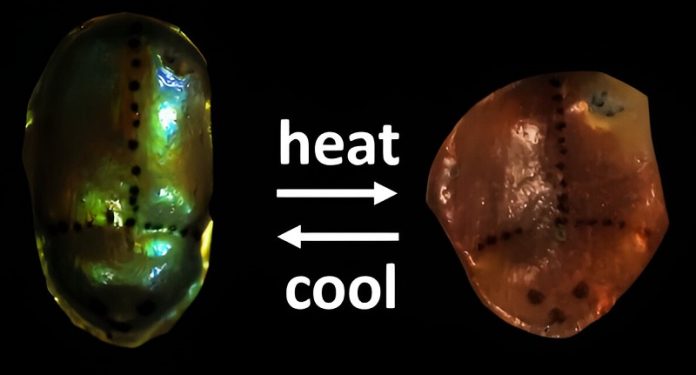
Ever wished you had a shirt that changes its color according to your mood or a robot that can adapt its shape like an octopus?
This might soon be possible, thanks to the groundbreaking research led by Pei Zhang, a Ph.D. candidate.
She’s found a way to make special materials that can change both shape and color, mimicking the way chameleons and other animals do it.
What’s the big idea?
Pei Zhang and her research team were inspired by animals that have the amazing ability to change their color and shape.
Think about how chameleons can hide from predators by blending into their surroundings or how octopuses change shape to navigate through tight spaces.
Zhang wanted to see if these incredible tricks could be copied using artificial materials called polymers.
The Special Ingredients: LCEs
The star of Zhang’s research is something called Liquid Crystal Elastomers, or LCEs for short.
These are special types of polymers that react to things like temperature changes, light, or even being pulled or stretched.
In simple terms, LCEs are like super-flexible plastics that can change their form and color based on what’s happening around them.
Zhang coated these LCEs with a layer that changes color with temperature. When the material is stretched, it shows a color change from orange to blue. The color comes not from added dyes, but from how the material is structured on a tiny level. This makes the color really part of the material itself.
Also, when the material is not stretched, it reflects a kind of light that we can’t see with our eyes. But when it is stretched, the light changes into a type we can see, revealing a pre-set pattern. This fancy term for this is ‘mechanochromism’.
What Can We Use It For?
These special materials could be a game-changer in several areas:
Medical Care: Imagine a bandage that changes color to show how much pressure it’s putting on a wound.
Building Safety: The material could be used in buildings to show if there’s too much strain on structures like ceilings or windows.
Fashion and Art: Think of clothes that change patterns or jewelry that adjusts its look based on your mood.
Zhang even made a 3D ‘beetle’ and a ‘cuttlefish’ out of these materials. They can change their color from green to red when heated and change their shape when a special type of light shines on them.
Zhang is excited about the future. She believes these shape-shifting and color-changing materials could be a big deal in robotics and smart clothing. She also thinks these materials could make our interaction with technology more fun and intuitive.
So, whether it’s medical bandages, safety measures in buildings, or the future of fashion, these real-life ‘transformers’ could be stepping out of the lab and into our lives sooner than we think.
Follow us on Twitter for more articles about this topic.



